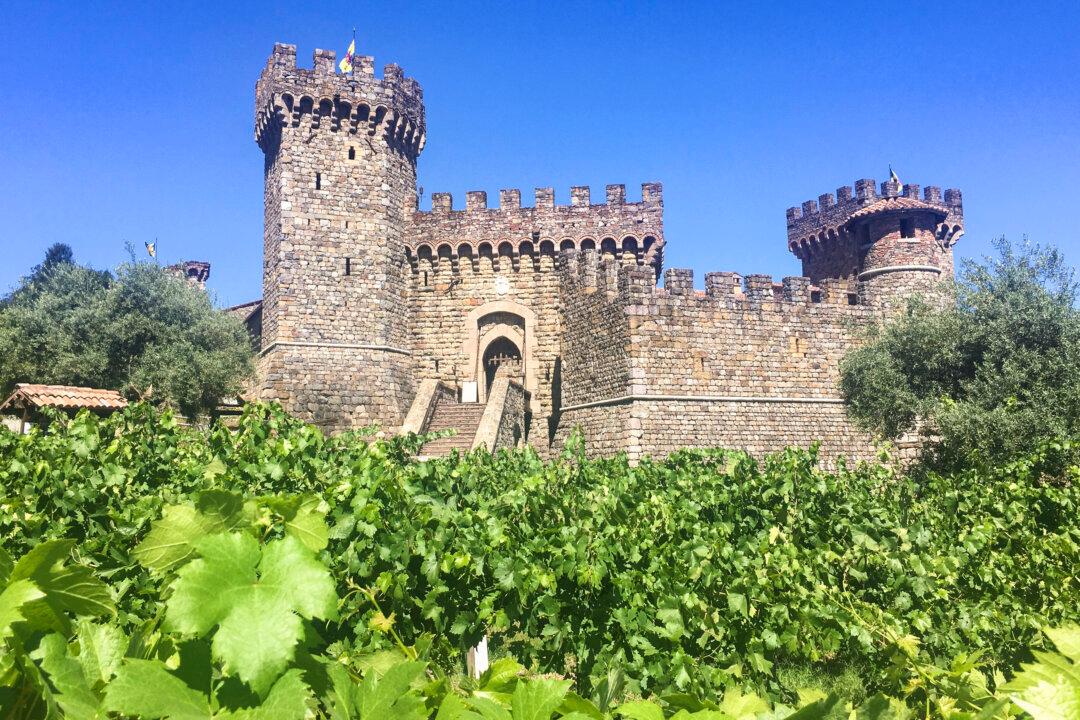CALISTOGA, Calif.—Tucked away in the winery fields of the Napa Valley in California is a 13th-century Tuscan castle—or so it appears.
A winding road lined with Italian cypress trees leads visitors closer to the castle, revealing its crowned towers. Upon arrival, one realizes a fortress of grapes surrounds the stronghold.






